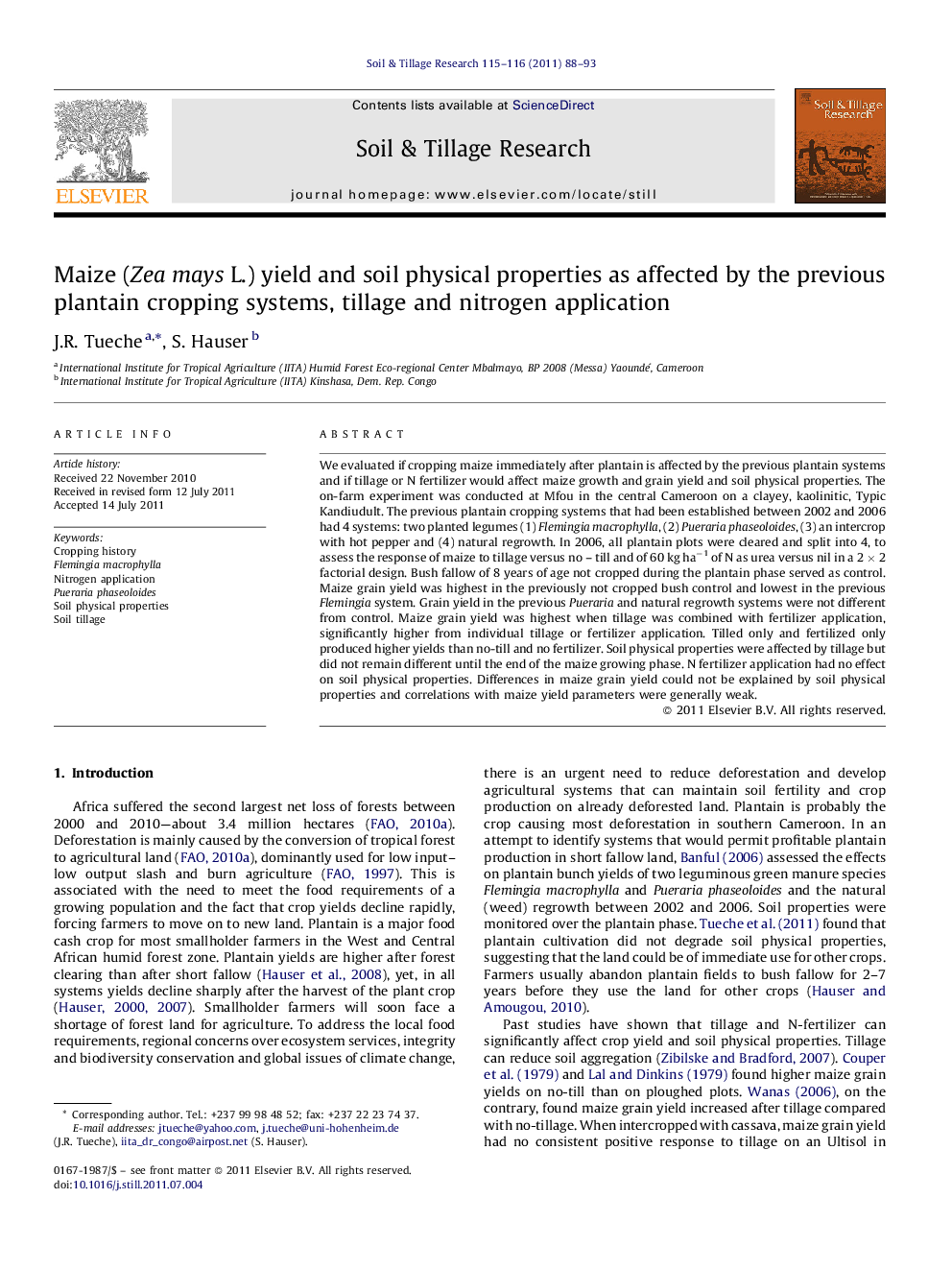| Article ID | Journal | Published Year | Pages | File Type |
|---|---|---|---|---|
| 306125 | Soil and Tillage Research | 2011 | 6 Pages |
We evaluated if cropping maize immediately after plantain is affected by the previous plantain systems and if tillage or N fertilizer would affect maize growth and grain yield and soil physical properties. The on-farm experiment was conducted at Mfou in the central Cameroon on a clayey, kaolinitic, Typic Kandiudult. The previous plantain cropping systems that had been established between 2002 and 2006 had 4 systems: two planted legumes (1) Flemingia macrophylla, (2) Pueraria phaseoloides, (3) an intercrop with hot pepper and (4) natural regrowth. In 2006, all plantain plots were cleared and split into 4, to assess the response of maize to tillage versus no – till and of 60 kg ha−1 of N as urea versus nil in a 2 × 2 factorial design. Bush fallow of 8 years of age not cropped during the plantain phase served as control. Maize grain yield was highest in the previously not cropped bush control and lowest in the previous Flemingia system. Grain yield in the previous Pueraria and natural regrowth systems were not different from control. Maize grain yield was highest when tillage was combined with fertilizer application, significantly higher from individual tillage or fertilizer application. Tilled only and fertilized only produced higher yields than no-till and no fertilizer. Soil physical properties were affected by tillage but did not remain different until the end of the maize growing phase. N fertilizer application had no effect on soil physical properties. Differences in maize grain yield could not be explained by soil physical properties and correlations with maize yield parameters were generally weak.
